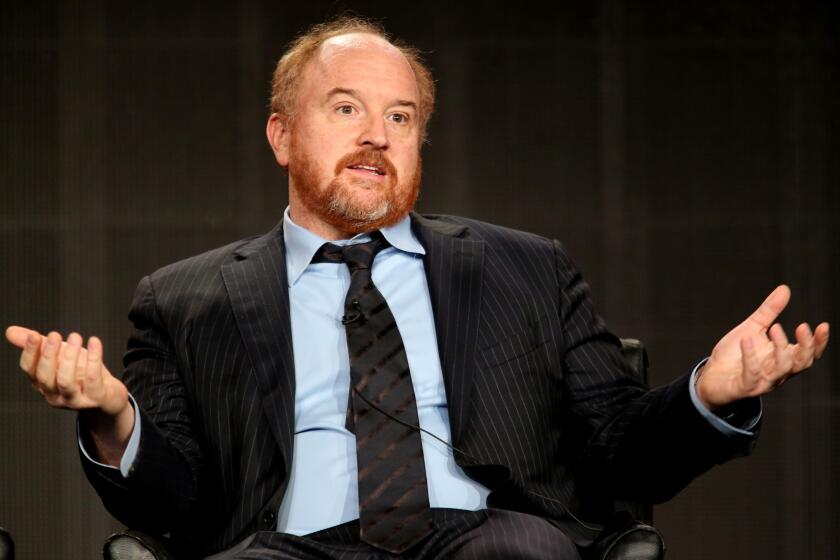‘LIVE-AID’ TELEVISION REVIEW : ROCK TELETHON STAYS LOW-KEY
Jerry Lewis would have never done it this way.
Saturday’s 16-hour Live Aid telecast--actually 19 with time-delay for ABC on the West Coast--wasn’t just any old telethon. Actually, the fact that Live Aid really was a telethon perhaps didn’t even occur to many people. During the exciting, moving and smooth parade of rock stars and the classy, low-key appeals for funds carried on MTV, KTLA here (one of the independent stations that carried much of the two-city event) and ABC, no one mentioned the word.
Still, the purpose was that of a telethon--to raise as much money as possible for a worthy cause via that most powerful of communicators, television.
Instead of pulling the beg-and-tease tricks of most telethons, this one moved along on the home screen with a convincing dignity. The musical acts came and went in a steady stream. Over the picture, the phone number and address for donations were occasionally and unobtrusively projected.
The appeals that followed were similarly subtle. The central one was made by Casey Kasem and Sally Field. He pointed out that this was not just a momentary cause, but the beginning of a chance to see that “hunger can be eliminated”; her voice trembled slightly with emotion but made its pleas calmly and even poetically. Shorter appeals were also aired, including 20- to 30-second speeches by everyone from Burt Lancaster and Wayne Rogers to Linus Pauling and Indian Prime Minister Rajiv Gandhi. These segments ran throughout the programming on MTV and KTLA. ABC limited itself to Dick Clark’s occasional reading of the fund-receiving address.
The viewer with access to both broadcast TV and cable had an advantage. Besides the appeals for funds were the usual commercials, and sometimes a song would be shown on MTV while ads ran on Channel 5 and vice-versa. Only an MTV viewer, for instance, could see U2 do all of “Sunday Bloody Sunday.” KTLA got back only in time for the last 20 seconds of the song. But while KTLA was showing the Beach Boys singing “Wouldn’t It Be Nice?,” MTV was running the often-repeated AT&T; “reach out and touch someone” commercial, augmented on this day to refer to “someone whose only hope is you.”
As MTV’s Martha Quinn pointed out, “Every time you see a commercial today, it’s raising money for someone who needs food.” So the commercials were bearable because they were for a good cause. The same can’t be said for Quinn and her cohorts.
MTV’s coverage was intent on featuring its “veejays.” Not only did we have to listen to the gee-whiz babble of Quinn, Mark Goodman and others, but MTV repeatedly interspersed shots of them reacting to various performances. This practice reached its most ludicrous moment during the Wembley finale, where every few seconds the viewer was taken away from Paul McCartney and his illustrious collaborators to view the enraptured veejays.
At least MTV showed the Wembley finale, and performances by the Who and Madonna. KTLA didn’t. The choice of shots, camera angles and direction throughout was efficient, if predictable.
One could, of course, find lots of other little things to complain about in hours of coverage. But as soon as you started fretting that MTV showed only half of one Bryan Ferry song or that ABC chose to include only about two-thirds of the reunited Led Zeppelin’s “Stairway to Heaven,” the grousing lost steam.
It had to, in the face of the extraordinary contrast communicated so clearly by TV on this day: the incredibly vast difference between the technological and entertainment riches enjoyed by one part of the world . . . and the almost unimaginable depth of despair suffered by another.
The complete guide to home viewing
Get Screen Gab for everything about the TV shows and streaming movies everyone’s talking about.
You may occasionally receive promotional content from the Los Angeles Times.



